Zinnias are cherished in gardens for their bold colors, long-lasting blooms, and ease of cultivation. These cheerful annuals can brighten flower beds, borders, and cutting gardens from late spring until frost. However, one of the most common problems faced by zinnia growers — both beginners and seasoned gardeners alike — is powdery mildew, a fungal disease that can quickly turn those vibrant plants dull and distressed.
Understanding how to prevent powdery mildew on zinnias is essential if you want to keep your flowers healthy, beautiful, and thriving throughout the growing season. This article will guide you through everything you need to know about this common fungal issue, including its causes, signs, and the most effective cultural, organic, and preventive treatments.
What Is Powdery Mildew?
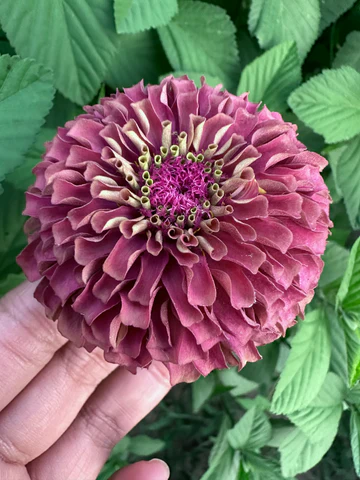
Powdery mildew is a fungal disease caused by a group of related fungi. It appears as a white, powdery coating on leaves, stems, and sometimes flowers. While it rarely kills zinnias outright, it can weaken plants, reduce flowering, and leave the foliage looking unsightly.
Key Characteristics:
- White, gray, or powdery spots on leaf surfaces.
- Affected leaves may curl, yellow, or drop prematurely.
- Typically appears in warm, humid weather, especially in late summer.
Why Are Zinnias Prone to Powdery Mildew?
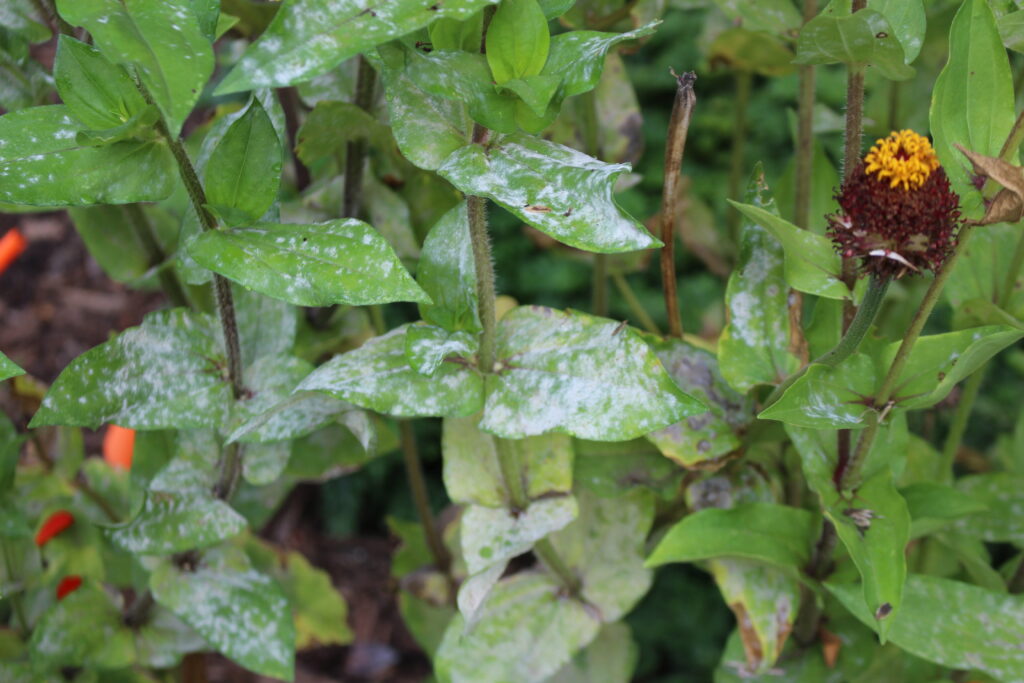
Zinnias are naturally susceptible to powdery mildew, particularly under certain conditions:
- Poor air circulation in crowded plantings.
- Overhead watering, which leaves moisture on leaves.
- High humidity combined with warm temperatures (65–85°F / 18–30°C).
- Shady areas where leaves stay damp.
- Older, more mature plants in late summer.
How to Prevent Powdery Mildew on Zinnias
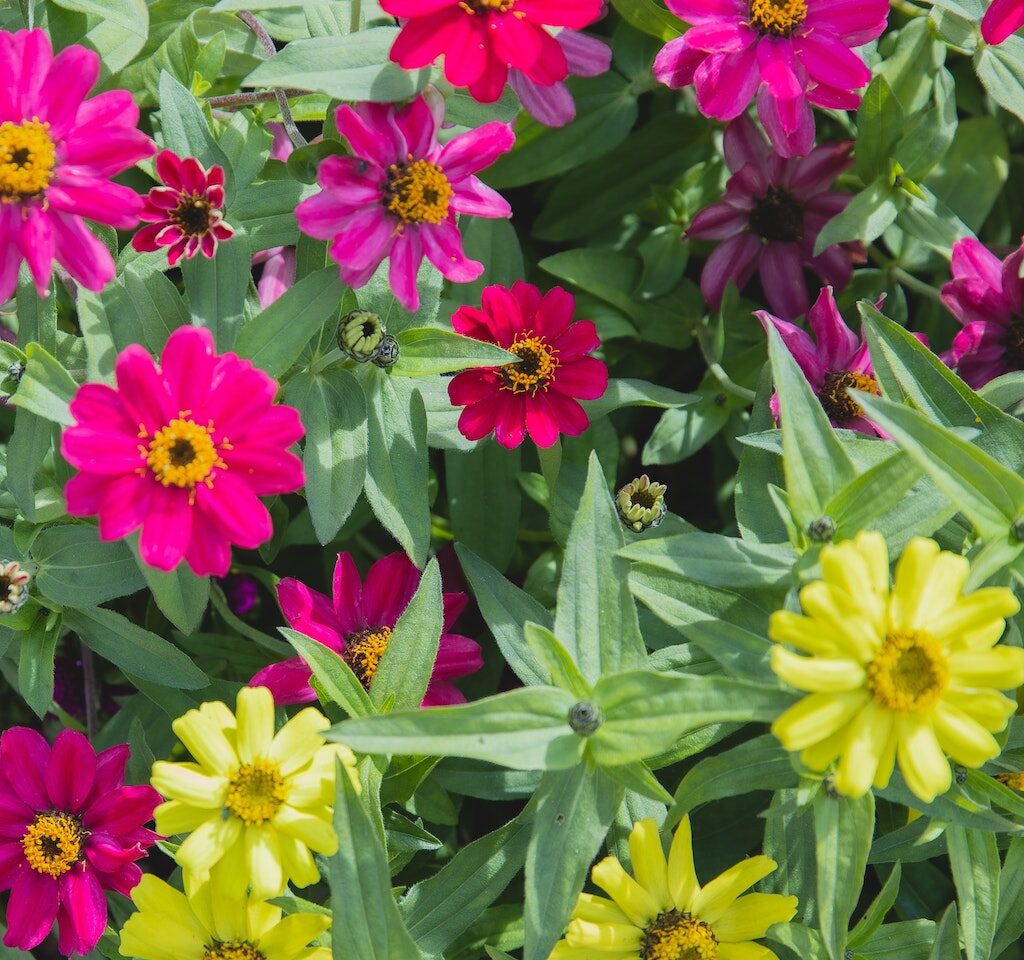
Prevention is always easier and more effective than treating an existing problem. By creating unfavorable conditions for the fungus and following good garden hygiene, you can dramatically reduce the chances of powdery mildew affecting your zinnias.
Choose Disease-Resistant Zinnia Varieties
One of the easiest and most reliable ways to prevent powdery mildew is by selecting disease-resistant zinnia cultivars.
Popular Resistant Varieties:
- ‘Zahara’ Series
- ‘Profusion’ Series
- ‘Benary’s Giant’ Series (more tolerant than others)
- ‘Oklahoma’ Series
Why It Helps:
These modern cultivars have been bred for increased resistance, making them far less likely to develop mildew even in humid conditions.
Provide Good Air Circulation
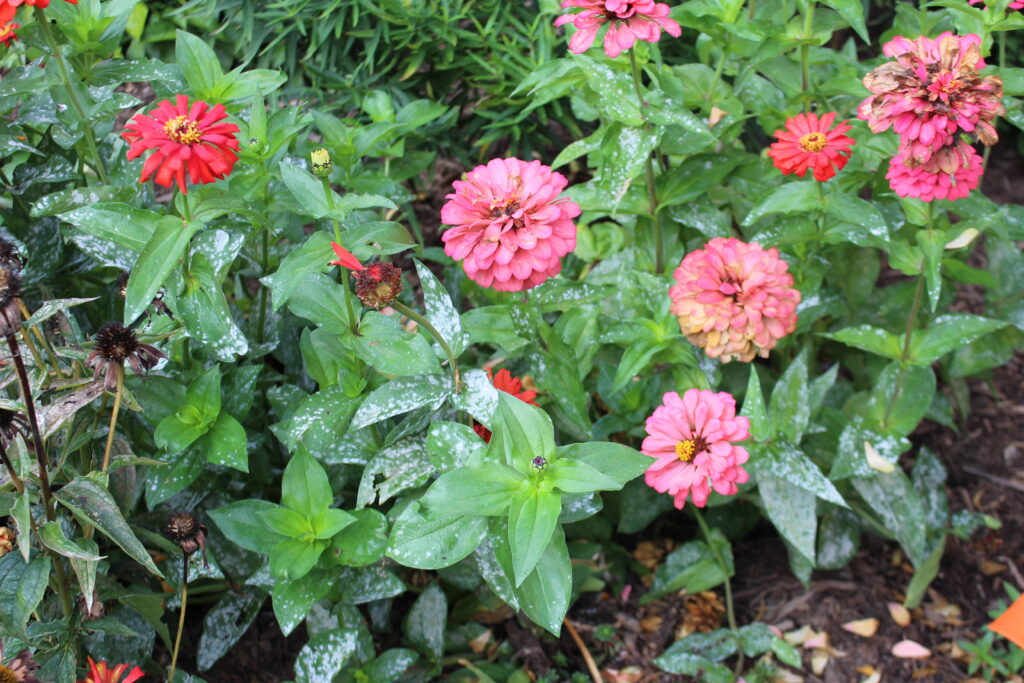
Plant zinnias with adequate spacing to allow for airflow between the plants. Good air circulation helps moisture on leaves evaporate quickly, making conditions less favorable for mildew spores to thrive.
Recommended Spacing:
- 12–18 inches apart for most garden zinnias.
- 18–24 inches for tall varieties like ‘Benary’s Giant.’
Pro Tip:
Avoid planting zinnias too close to fences, walls, or other dense plantings.
Water at the Base of the Plant
Avoid overhead watering, which wets the leaves and creates the moist environment powdery mildew loves. Instead, use drip irrigation, soaker hoses, or a watering can directed at the soil level.
Why It Helps:
Dry foliage reduces the chances of fungal spores germinating and spreading.
Pro Tip:
Water early in the day so any accidental moisture on leaves dries quickly in the morning sun.
Grow Zinnias in Full Sun
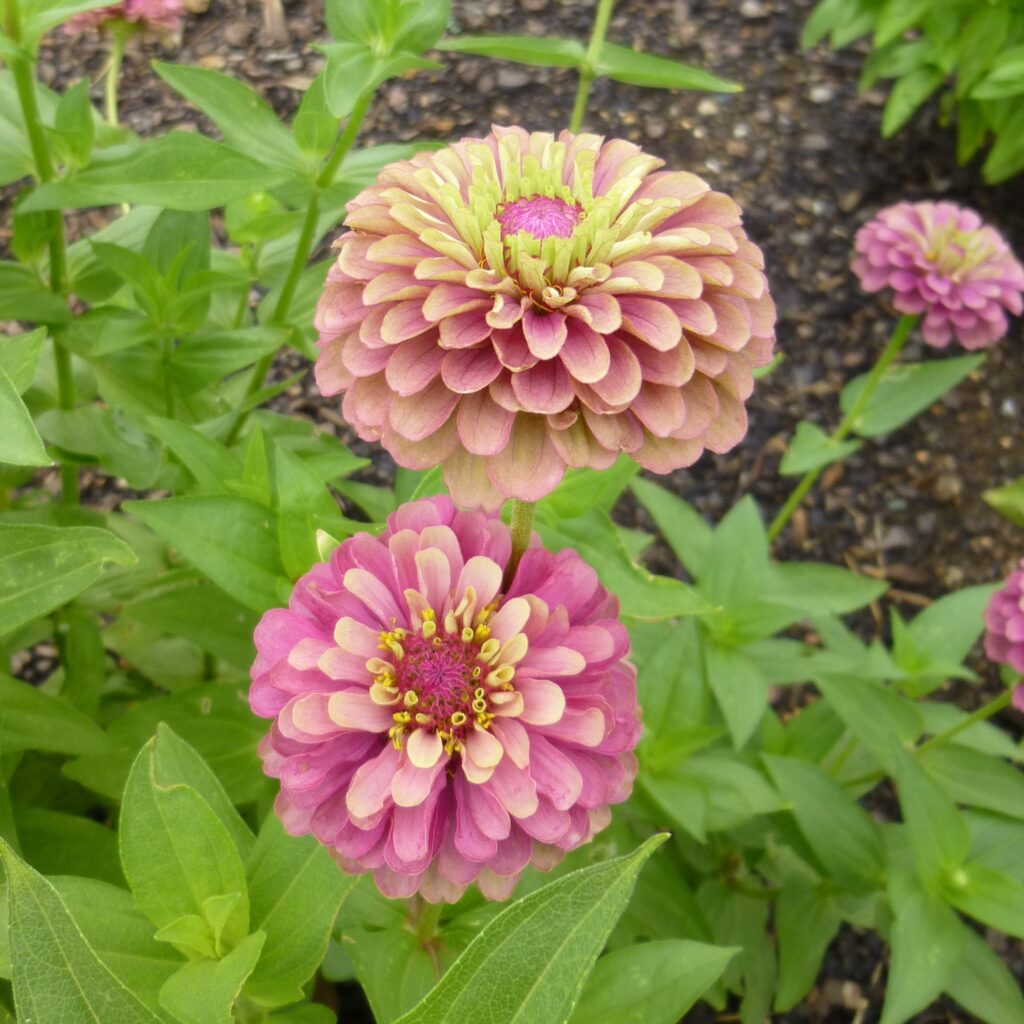
Zinnias are sun-loving plants that thrive in bright conditions. Full sun exposure (at least 6–8 hours daily) keeps leaves dry and discourages fungal growth.
Why It Helps:
Sunlight warms and dries foliage quickly and promotes stronger, healthier plants that are less vulnerable to disease.
Avoid Excessive Nitrogen Fertilization
While zinnias appreciate fertile soil, too much nitrogen encourages lush, soft growth that is more susceptible to powdery mildew.
Use Balanced Fertilizers:
- Apply a balanced 10-10-10 or 5-10-5 fertilizer.
- Avoid excessive high-nitrogen formulas.
Pro Tip:
Incorporate compost or organic matter into the soil before planting to improve nutrition naturally.
Practice Good Garden Hygiene
Remove any affected leaves and plant debris promptly and dispose of them away from your garden. Don’t compost infected materials, as spores can overwinter and reinfect plants the following year.
Why It Helps:
Limiting the presence of fungal spores reduces future outbreaks.
Pro Tip:
Clean garden tools after pruning or removing diseased foliage.
Use Preventive Organic Sprays
If powdery mildew is a frequent issue in your area, consider using preventive sprays before signs of disease appear, especially during humid spells.
Effective Organic Options:
- Neem oil
- Potassium bicarbonate solution
- Horticultural oil
- Milk spray (1 part milk to 2 parts water) — surprisingly effective due to its antifungal properties.
Pro Tip:
Apply sprays in the early morning or evening to avoid burning foliage in direct sunlight.
Recognizing Early Signs of Powdery Mildew
Early detection makes it easier to control outbreaks.
Symptoms to Watch For:
- Small, round white spots on upper leaf surfaces.
- A dusty or powdery film that spreads quickly.
- Distorted or curling leaves.
- Premature yellowing and leaf drop.
At the first sign, remove infected leaves and begin a treatment regimen with organic sprays.
Rotate Zinnia Plantings Annually
Avoid planting zinnias (and other mildew-prone plants) in the same spot year after year. Rotate them with non-susceptible crops or flowers to reduce the buildup of fungal spores in the soil.
Why It Helps:
Crop rotation breaks the disease cycle and limits fungal pressure on new plantings.
What to Do If Powdery Mildew Appears
Despite best efforts, powdery mildew can occasionally strike. Here’s how to respond:
Immediate Steps:
- Remove infected leaves immediately.
- Increase air circulation by thinning crowded plants.
- Treat with organic fungicides such as neem oil or bicarbonate solutions.
Continue Regular Maintenance:
- Water carefully.
- Clean up fallen debris.
- Monitor closely for signs of recurrence.
Pro Tip:
Cut back severely affected plants by one-third to promote new, healthy growth if necessary.
Conclusion
Powdery mildew may be a common issue for zinnias, but with the right preventive measures, you can grow healthy, vibrant plants that bloom beautifully all season long. By choosing disease-resistant varieties, spacing plants properly, watering at the base, providing full sun, and practicing good garden hygiene, you can effectively minimize the risk of this fungal disease.
When needed, organic sprays like neem oil or milk solution offer safe, eco-friendly control options. With early detection, consistent care, and a little planning, powdery mildew won’t stand a chance in your zinnia patch.
So, plant boldly, keep your garden tidy, and let your zinnias shine with disease-free color and charm all summer long.





